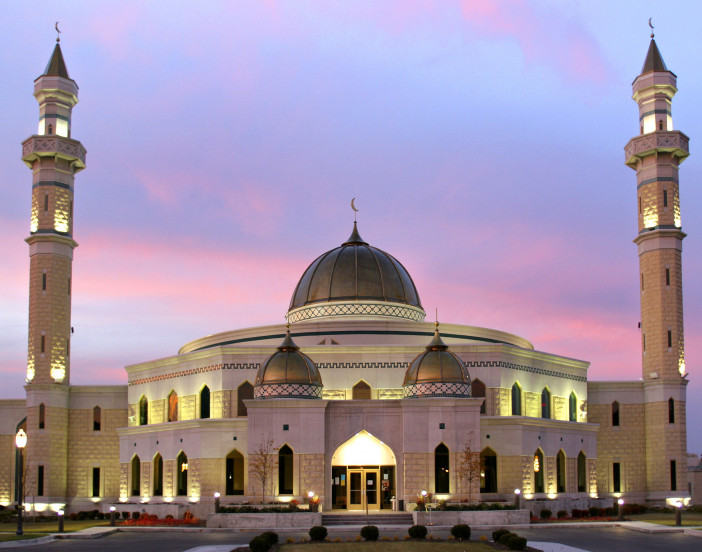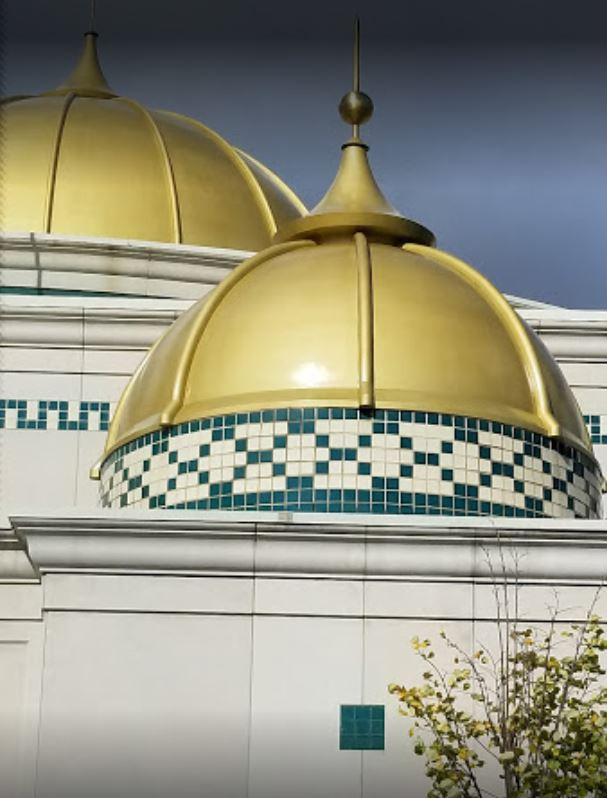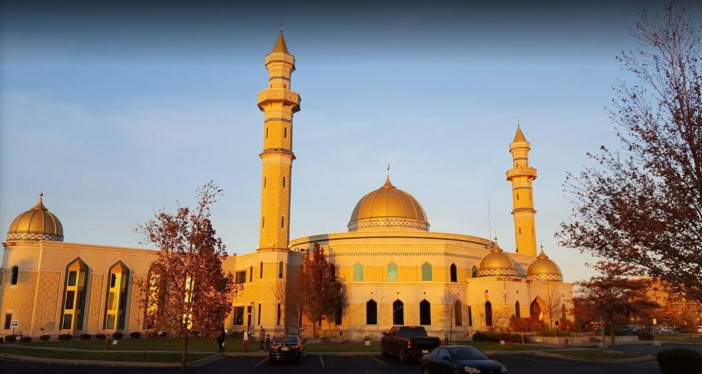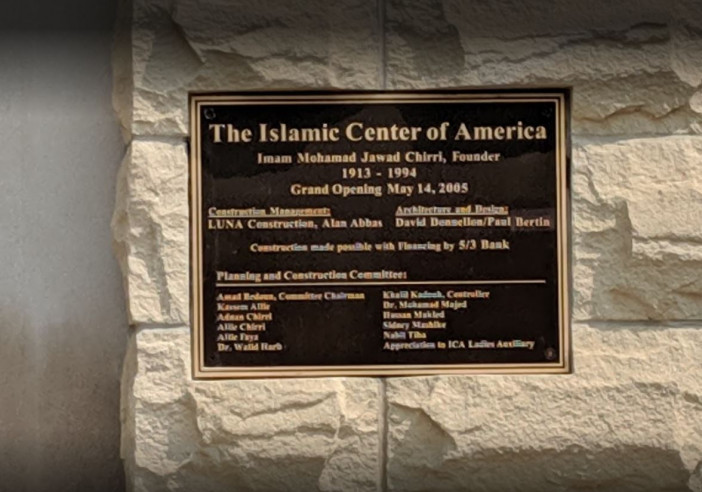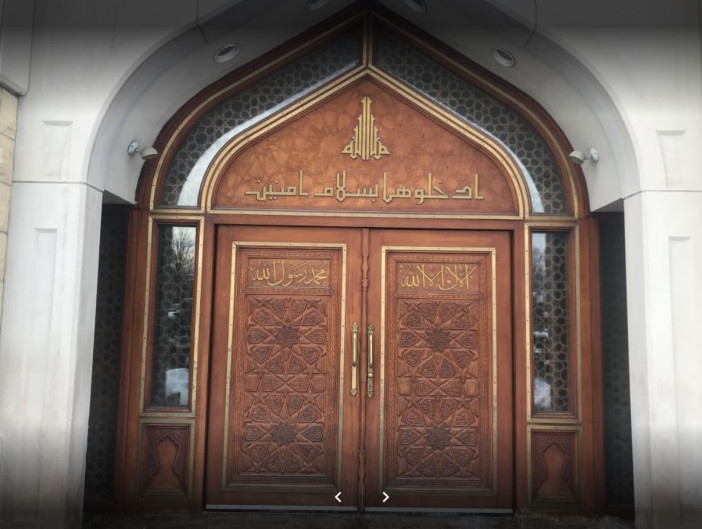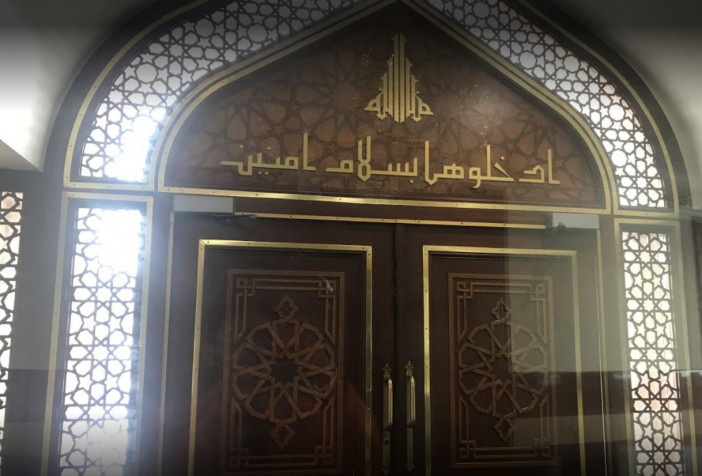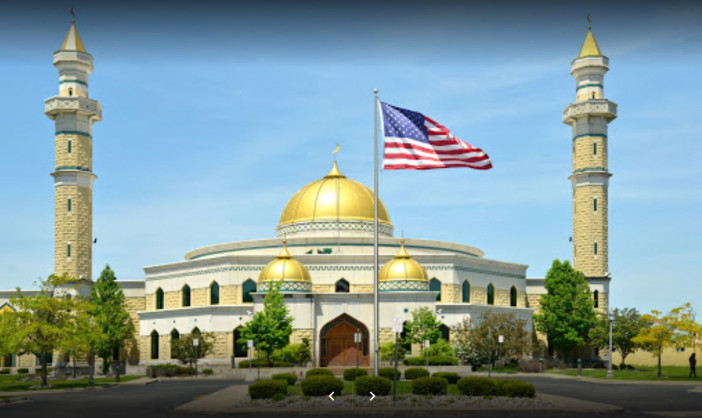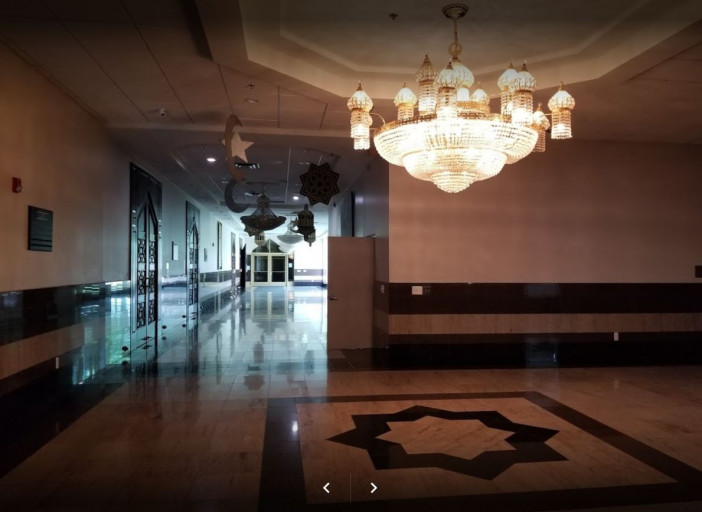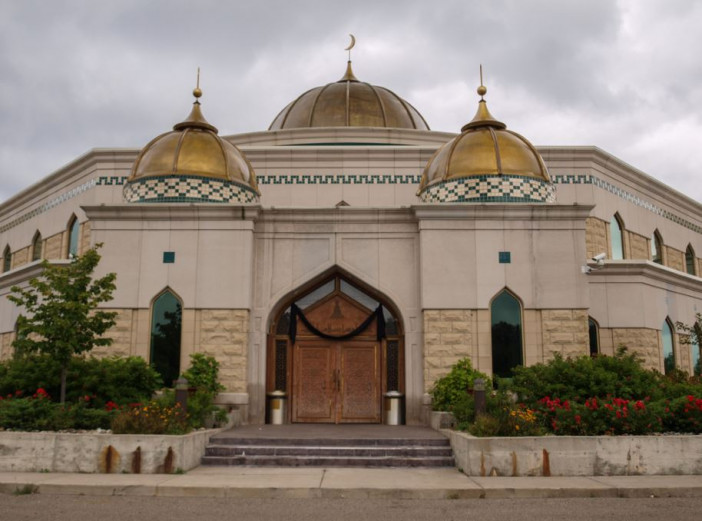Islamic Center of America
History
Muslims from Lebanon and Syria began to arrive in Detroit in the 1940s. The small Muslim community—mostly blue-collar and small-store owners—persuaded theologian and scholar Iman Mohamad Jawad Chirri (1913–1994) to come from Lebanon to Detroit to offer Islamic guidance; he arrived in 1949. In 1954, the Islamic Center Foundation Society was established, and Chirri became its leader.
The Islamic Center of Detroit opened in 1963 on Joy and Greenfield roads on land purchased from the Ford Motor Company. The congregation quickly outgrew these quarters, expanded, and built a religious center and school on Ford Road. Imam Sayed Hassan Al-Qawazini came from California in 1994 to act as the spiritual leader of the community. He nurtured the desire to build this center. Al-Qawa
zini stated that “the challenge is to establish the roots of moderate and open-minded Islam in a pluralistic society such as the United States.” The mission of the Islamic Center of America, in part, is to raise and manage funds necessary to teach the religion of Islam, to retain Muslim cultural, social, and religious traditions, to teach Arabic, and to educate Americans about Islam and Arab culture. Both a forum and prayer house, the center aspires to be the
Urban and Architectural
Minarets
and small domes mark the corners and flank the main entrance of the mosque.
Striated masonry with alternating rusticated yellowish-white sandstone and
greyish-white smooth limestone reminiscent of the desert covers the walls. A
running band of deep green ceramic tile decorates the frieze and the fibreglass
domes are golden-hued. Within, the mosque's prayer hall is positioned beneath
the large dome on an axis directed east toward Mecca and accommodates one
thousand people, with the women's area in a balcony. The center has a
banquet/social hall and auditorium, classrooms, and facilities for ritual
ablutions. Glittering crystal chandeliers and marble floors lend a sumptuous
appearance to the interior.
Description
Built 2005 by Alan Abbas and Luna Construction.
Designed by Paul Bertin and David Donnellon.
Details
الموقع
Dearborn, MI 48128, USA
تاريخ البناء
2005
الرسومات المعمارية
الخريطة
History
Muslims from Lebanon and Syria began to arrive in Detroit in the 1940s. The small Muslim community—mostly blue-collar and small-store owners—persuaded theologian and scholar Iman Mohamad Jawad Chirri (1913–1994) to come from Lebanon to Detroit to offer Islamic guidance; he arrived in 1949. In 1954, the Islamic Center Foundation Society was established, and Chirri became its leader.
The Islamic Center of Detroit opened in 1963 on Joy and Greenfield roads on land purchased from the Ford Motor Company. The congregation quickly outgrew these quarters, expanded, and built a religious center and school on Ford Road. Imam Sayed Hassan Al-Qawazini came from California in 1994 to act as the spiritual leader of the community. He nurtured the desire to build this center. Al-Qawa
zini stated that “the challenge is to establish the roots of moderate and open-minded Islam in a pluralistic society such as the United States.” The mission of the Islamic Center of America, in part, is to raise and manage funds necessary to teach the religion of Islam, to retain Muslim cultural, social, and religious traditions, to teach Arabic, and to educate Americans about Islam and Arab culture. Both a forum and prayer house, the center aspires to be the
Urban and Architectural
Minarets
and small domes mark the corners and flank the main entrance of the mosque.
Striated masonry with alternating rusticated yellowish-white sandstone and
greyish-white smooth limestone reminiscent of the desert covers the walls. A
running band of deep green ceramic tile decorates the frieze and the fibreglass
domes are golden-hued. Within, the mosque's prayer hall is positioned beneath
the large dome on an axis directed east toward Mecca and accommodates one
thousand people, with the women's area in a balcony. The center has a
banquet/social hall and auditorium, classrooms, and facilities for ritual
ablutions. Glittering crystal chandeliers and marble floors lend a sumptuous
appearance to the interior.
Description
Built 2005 by Alan Abbas and Luna Construction.
Designed by Paul Bertin and David Donnellon.


